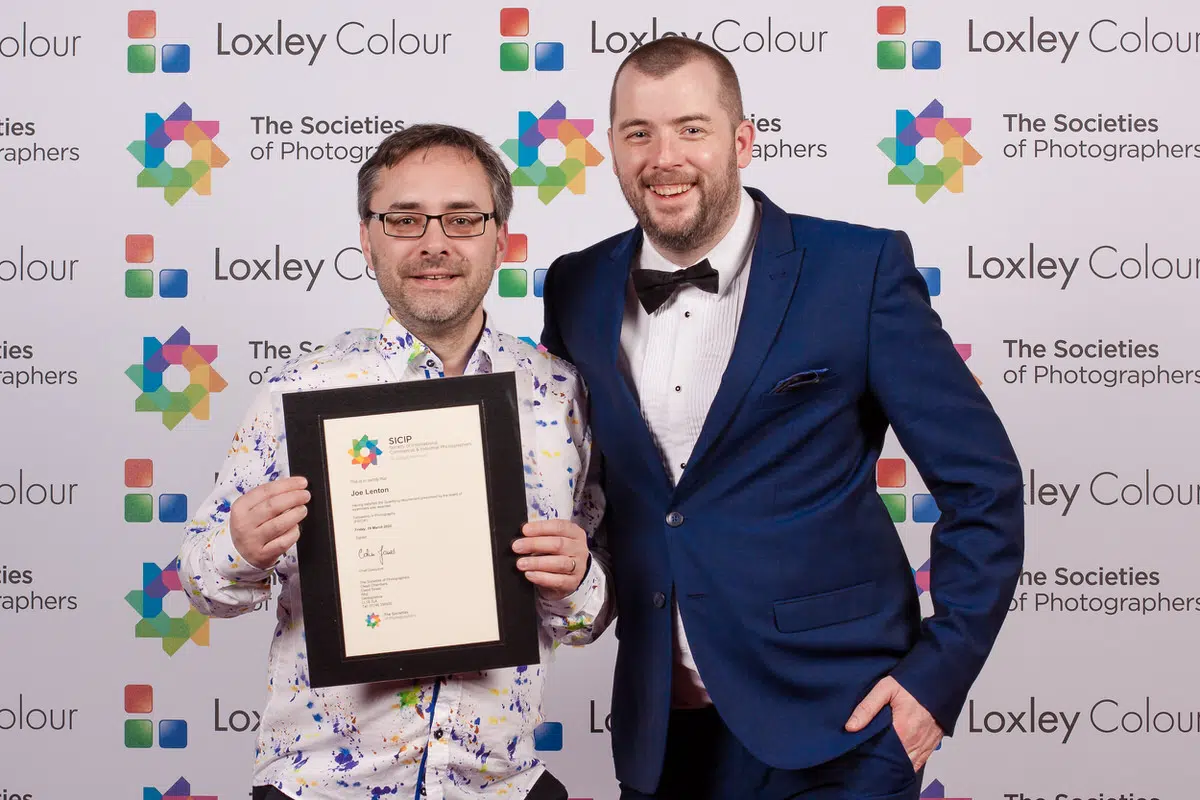How to Create a Successful Image - Photography Tips

We all like success. Anyone who creates images loves receiving praise for their work. But, not all images are equally valued by everyone. Why is it that some photographers seem to win more awards than others? How is that some find it easier to have their work accepted in international competitions than down the local photography club? Why do some professional photographers have a lot of clients but never seem to win any photography awards? How come there are some images that only a parent or close family member seem to love? This article looks at why some succeed in some circles but not others. We will then also go on to consider how to create a successful image more reliably.

What is a "Successful" Image?
Success does not necessarily look the same for everyone. For one person, success might be having an image accepted into an exhibition. For another, it might mean a company gaining thousands more sales. So, rather than defining success by a particular standard, it can be more helpful to think of it in terms of reaching goals: a successful image is one that achieves its goals. No matter what those goals may be, achieving them means that the creator has been successful.
"A successful image is one that achieves its goals"
Joe Lenton Tweet
Our personal evaluation of how effective and how successful an image has been will draw upon a set of criteria. Those criteria vary depending on the audience. Some settings will involve highly technical considerations. Others may be more concerned with emotion or personal expression. A parent is unlikely to judge their child’s photos in the way that a judge at an international competition would assess an entry from a professional.
Our target audience and the expectations associated with it make up a large amount of the framework for judging an image to be successful or effective. No matter how many audiences might not approve of our work, if the target audience does then the image has met its goals and is a success.

Who is Your Target Audience?
When we create images we hope people will see them. We hope that our images will have an audience. Sometimes that may be ourselves – we want to create something that we like and will enjoy looking back at. Or, we might create images that we hope our friends and family will like. Some photographers will want to win awards from photographic societies or international salons. Professional photographers want their clients to be happy with the images they produce for them.
Whether we are conscious of it or not, there is a target audience of some kind each time we create an image. If we want to know how to create a successful image then we need to know who that target audience is and what they are looking for. We can also then choose whether or not to listen to feedback that is not from that target group.
Pleasing Ourselves or Pleasing Others?
The first step is to consider whether we actually want or need a target audience beyond ourselves. We can create images for our own pleasure without having to gain outside approval. Seeking universal approval is likely to affect our mental health negatively. There is always going to be someone who doesn’t like what we do or thinks it can or should be improved!
In some cases the goal might be to create something and that is it. It can do us good to be creative and to enjoy the process without subjecting the result to others’ scrutiny. Others might choose to put their work into the public arena in the hope of gaining recognition or accolades. Professionals produce work that clients must be willing to pay for. So, in these instances, avoiding feedback isn’t possible. Targeted images are essential if we are seeking to please our tribe.

Succeeding in Photography Competitions
There are competitions at all levels of photography – from prestigious international competitions to local ones in a club or village. They can all have value for photographers for different reasons. If we want to “do well” in competitions (i.e. achieve a high rank or win an award, for example) then it helps if we can understand the context. On some levels this is obvious – you don’t enter a picture of a house in a wildlife photography category! But, we can easily miss other unspoken “rules”.
Judges work according to a set of criteria. Depending on the setting this might involve anything from a readily available written set of principles (such as the judging criteria of The Societies of Photographers) to a more vague sense of what the judge “likes”. They may or may not be experienced photographers themselves. Their way of looking at images might be different to yours and it might take some time to work out indirectly what that is.
What “good” looks like is, therefore, subjective and dependent on the consensus (or reasonable agreement) of a particular community. So, if you want to be “successful” in a particular competition, you would benefit from working out what it is they are looking for. You may manage this by accident. But, if you want to increase your chances of approval from that community, the best way is to give them what they want.
So, for example, if one factor applied to assessing a qualification panel is that the images follow the rule of thirds, you are unlikely to be “successful” if you don’t compose your images using that method. In photography clubs where they may have a lot of judges over a season, I have seen entrants attempt to tailor their images to the tastes of each judge. Whether you want to do this or not is a personal choice. But, if you want approval from a community, you tend to have to play by their rules. Find out what they want and give it to them.
Your level of ability may also be a factor, of course. So, to make sure that you meet the technical or aesthetic requirements you may need to get training to advance your skills in the required direction.

Effective Images for Business
If your images are destined for business clients then your audience may be very different to that of a photography competition. Indeed, I have had experiences where the images preferred by one aren’t so well appreciated by the other. If you plan on using business images for competitions then you may need to tailor them to 2 audiences, which is no mean feat.
When you are relying on a client to pay you for photography services it is important to give them what they want. Yes, you might be able to challenge their expectations and widen their horizons. However, your target audience needs to be happy if you are going to be paid…
The simplest way to know how to create a successful image for a business client is by following their requirements laid out in the photography brief. (If you are unfamiliar with a photography brief then please take a look at my guide). They should have set out their expectations before you start shooting.
For business images to be “successful” you could argue that they not only need to be approved by your client, but also in a sense by their clients. In other words, your images are “successful” if they appeal to the business’ target audience, not just the business itself. The brief should be commissioning you to create images for a particular purpose. This purpose is normally related to gaining sales or consolidating relationships with clients. So, sometimes we need to see beyond the preferences of the businesses we are shooting for to reach their target audience more effectively.
Is a business image truly “successful” if their head of marketing likes it or if it drive more sales? Ideally we would go for both. But sometimes we need to help our clients see that their preferences need to be subordinated to those of their target market.

Cultural Awareness
As we have seen, different audiences have different expectations. This can happen for a number of reasons, one of which is culture. If we are more aware of the culture that is going to see our pictures then we can make sure that our visual cues are in line with what they expect and can understand. Yes, we may wish to subvert them, but to be able to do that deliberately means knowing what these cultural elements consist of first.
Culture can affect all aspects of what we see. It is linked to a worldview, governing how we interpret what we encounter. Certain objects or gestures, for example, can be quite innocuous in one culture but cause offence in another. There might be different signals for wealth, power, weakness, etc. Without knowledge of that culture, it can be hard to know if what we think we are saying is the same as what is received.
We take our own culture for granted and risk being blind to its presence and effects. If we want out images to be powerful communication tools then we need to dig into the culture of those who are to receive them. Do they read naturally from the left or the right? Does height up the page mean something? How do their aesthetics differ from our own? If we don’t take the time to explore these and other similar questions then the “success” of our images in communicating with that community could be limited.
Businesses - Don't Forget The Brand!
One form of culture that commercial photographers encounter all the time is a company’s brand. In essence, a brand is like a personality or culture that is the sum of all its parts. This will include things like the logo, main brand colours, etc, but these in themselves are not enough to define a brand. When we talk about business images being “on brand” that means that they are consistent with what the business is communicating about itself elsewhere. It is a bit like a person saying and doing things that we would expect of them rather than suddenly acting out of character.
So, this means that there can be yet another aspect from which we can assess the effectiveness of our images. Not only do we need to consider how our clients will receive them and how their clients in turn will receive the pictures, we have to bear in mind that what we are communicating should be part of a coherent brand. A successful image in product photography, for example, may then need to look like it comes from that brand’s stable as well as achieving the other goals set for it. That is quite a burden on an image!

Creating Targeted Images
Once we know which audience we are targeting we can begin to create images that are more likely to connect with them. We can draw on a variety of tools to help us have confidence we are on the right track. In some cases, these tools are the very thing that the target audience want to see used. Even if they aren’t consciously aware of them, these factors can still influence the way people think and feel about an image.
Level of Quality Required - Kit & Tools
The photographic equipment used to create the image can have a bearing on its “success”. Supposing we need an advertising image printed on the side of a bus. A small jpg file might not provide sufficient resolution for a high quality print. Or, maybe we are taking a photo in very contrasty lighting. If we don’t find a way to balance that lighting we could end up with shadows faded to black or highlights blown out to white and that might mean we miss our target.
More expensive kit doesn’t guarantee better images. But, there are things that can be difficult or possibly even impossible to achieve without certain equipment. If the demands on the image are especially high (such as for advertising), then we need to make sure that our kit is up to the job of capturing the data we need. An image may no longer be “successful” if it is noisy, pixelated or too small for purpose.
Composing Effective Images
Composition is a huge topic in itself, so we will only touch on a few aspects here rather than go into any real detail. The idea behind composition is how various elements are organised into an image. You could possibly say it is a bit like taking some words and forming them into sentences and paragraphs. Although each element has meaning on its own, it becomes deeper and more nuanced in relationship with others.
Subject Placement
If there is one main subject or a few key subjects that we want the viewer to pay attention to then it is worth arranging them carefully. Where we place them in the frame will have an effect on how they are perceived. We may put them right in the middle, or off to one side or possibly use a structure such as the golden ratio or “rule” of thirds. A “successful” image is normally one that has come about deliberately rather than by chance. If we arrange the elements carefully with some kind of guiding reasoning if possible then we can increase the chances of it appearing ordered to those viewing it.

Lighting
Lighting is central to photography. It is the wide spectrum from totally bright (white) to absence of light (black) that makes up the tonal ranges of our images. Controlling light can have a huge bearing on how our images land with their audience. Does it look like we were in control? Have we used lighting that enhances the subject? This input from the photographer is one of the most important when evaluating an image.
Focus & Depth of Field
Keeping some areas sharper than others can draw the attention to areas within a photo. Areas that are blurred out tend to be interpreted as of lesser significance. That isn’t to say they don’t matter, rather that they become in most cases subordinated to the sharper elements when we view the image. “Depth of field” – how much of an image is in focus – is one of the key controls photographers have for drawing attention to a subject.

Emotions & Narrative
Targeted images will often be attempting to influence how the viewer feels. The elements may be arranged in such a way as to suggest some kind of narrative or “story”. The relationship between the elements of a composition such as whether objects face one another and how they interact (if at all) can all contribute to a sense of narrative. The lighting and colours are powerful ways to signal emotions. Do we want the image to upset, challenge, inform or something else? The composition will affect our success in this regard.
Adding Associations
Our brains will look for reasons why things have been put together in a picture. We will make associations between the various subjects and the scene. Not only that, we will bring with us associations from previous encounters with those subjects/elements. Colours and things carry significance that can affect how we interpret their use in a new context.
Using Colour Deliberately
Colour theory has long been a part of studying the creative arts. Whether you are a painter, designer or photographer, colour is a powerful tool at your disposal. For example, red may evoke anger, lust or make us think “STOP!” Some colours go together more naturally than others. We divide them into analogous colours, complementary colours and other categories. Understanding the use of colour by your target audience means that you can use it more effectively in your images to communicate with them.

Object & Lifestyle Associations
In the world of advertising, object and lifestyle associations are a common way of positioning a product in the mind of the viewer. If you are selling a luxury watch then you might have other luxury items in the scene to reinforce its place in the market. This might also be used in reverse – by placing an object in an environment in which it clearly doesn’t belong we say something about it to the observer.
This technique is only effective if the associations we choose are also recognised by the target audience. For example, if they don’t associate the same items with wealth as us then our message may fall on deaf ears. Again, researching our target audience provides us with the knowledge to communicate effectively. We can’t complain that they don’t understand if we have made no effort to speak in ways that make sense to them.
Retouching
Should you retouch an image or not? In some photography competitions retouching is explicitly banned from some categories. The public may react favourably to retouching some subjects, but might strongly oppose it in other instances. We have seen many arguments over the extent of retouching used in fashion images of people. For our images to be effective, we need to be aware of our target audience’s views on this matter.
Testing How Effective Images Are
So, we’ve put a huge amount of time and effort into thinking about our images and crafting them for our target audience – now what? The obvious way to test how effective our efforts have been is to present the images to our target audience for feedback. But, they might not be the only ones offering their critique. If we post on social media, we may get all kinds of voices commenting on our images. So, how can we keep focussed?
Feedback - Who Should You Listen To?
If we listen to those outside our target audience then we may learn something valuable, but we may equally hear comments that are irrelevant to us. We and our images will not be universally liked. We can choose whose opinions matter to us. The only people whose feedback really matters are those who can enable us to be more “successful” in our chosen arenas. It might not be immediately obvious when this is the case. Comments from someone apparently not in our initial target audience may yet prove useful, but we might rightly choose to favour those whom we are targeting.
If you want to gain a qualification with a photographic society then you would do well to listen to feedback from them rather than a friend. In business it can be more complicated given the tendency for there to be multiple “audiences”. Ideally, your client will get feedback from their audience and pass that on to you. But, some may give their own opinion before discovering if it actually speaks to their target audience.
Blanking someone or listening without a critical ear are not likely to be helpful ways to make progress. All feedback needs to be evaluated. At the end of the day, you need to decide if you want to make the necessary adjustments for you to “succeed” with that audience. You may choose to persevere and change, or you might move on to a new audience.
"We and our images will not be universally liked. We can choose whose opinions matter to us"
Joe Lenton Tweet
Evaluate the Success of Your Image
As we said at the beginning, measuring “success” is relative to the targets or goals you have. If you were creating for a commercial client then you should ideally be able to go through the brief and tick all the boxes next to the requirements. In competitions you might evaluate your success by how many awards you win or if your marks improve on last time. Don’t evaluate your success based on someone else’s targets.
Can We Create Successful Images Reliably & Consistently?
Sometimes our images will be more successful than others. We might be surprised by the results. An image may do better or worse than we anticipated. Does that mean we should give up on trying to created targeted images?
Those who work consciously at their discipline tend to find that their success rate improves. We won’t have a success every single time. But, we can increase our chances of meeting with our audience’s approval by both working on our skills and working to understand our audience. One reason why photography accreditations are assessed against panels of images is to assess whether the individual is capable of a consistently high level of presentation. One might fluke a fantastic one-off. But, we can work to master our craft and become more successful communicators.

Resources & Further Reading
You may benefit from an image audit to help assess how effective your images are.
Discover more about how colour connects with our emotions and more in my article about communicating with colour.
© Joe Lenton, October 2022
